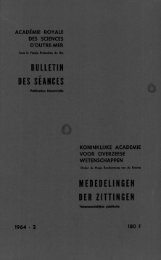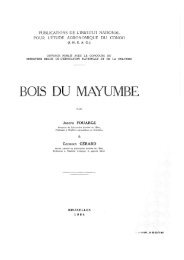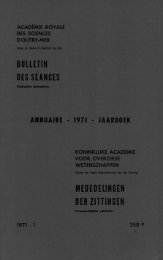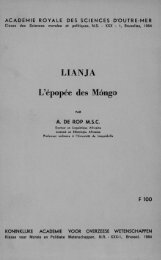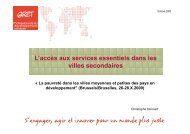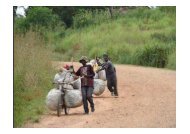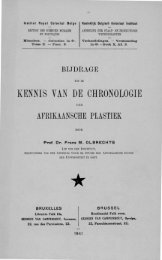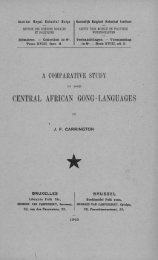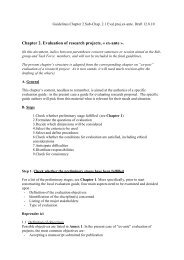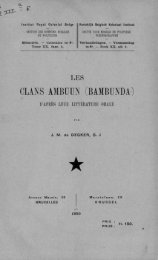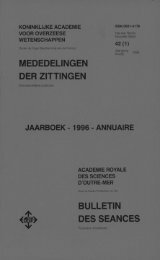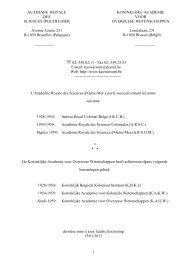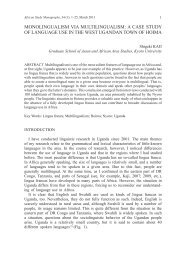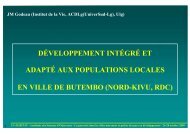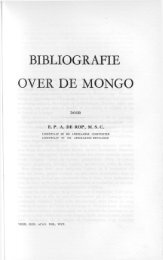(1973) n°3 - Royal Academy for Overseas Sciences
(1973) n°3 - Royal Academy for Overseas Sciences
(1973) n°3 - Royal Academy for Overseas Sciences
You also want an ePaper? Increase the reach of your titles
YUMPU automatically turns print PDFs into web optimized ePapers that Google loves.
— 518 —<br />
accept criteria based on exoerythrocytic schizogony; if they paid<br />
sufficient attention to these two requirements they would probably<br />
change their minds. Another argument that is sometimes<br />
advanced against their value in the identification of malaria<br />
parasites of animals, is that the methods necessary <strong>for</strong> eliciting<br />
the diagnostic characters cannot be applied in the field or are<br />
too difficult. This is of course an entirely irrelevant consideration<br />
<strong>for</strong> the taxonomist. It is true that the blood stages are<br />
much easier to observe, but the details of sporogony and exoerythrocytic<br />
schizogony are invaluable. W ith full knowledge of<br />
all the data, it should be possible to identify the species (and<br />
frequently the subspecies) of a primate malaria parasite by its<br />
liver stages alone.<br />
One is sometimes asked what is the practical value of knowledge<br />
about the tissue stages. The simplest answer is that these<br />
are the <strong>for</strong>ms which are the target of drug prophylaxis of the<br />
disease. Until one had learnt where they grew and their appearance,<br />
it was impossible to observe directly the effect of new<br />
compounds on this stage of the parasite. The perfect prophylactic<br />
drug however has yet to be discovered.<br />
Unlike the stages in the blood and in the mosquito, exoerythrocytic<br />
schizonts are most unlikely ever to be found in natural<br />
infections in man. Their appearance is ephemeral and their<br />
numbers minute in the extreme. The tissue stages of the primate<br />
species only occur after sporozoite infection; they cannot arise<br />
from blood <strong>for</strong>ms. As such they cause no harm to the host.<br />
Almost certainly the exoerythrocytic schizonts are the most primitive<br />
or original stages in the life history of the parasite and<br />
represent the survival of a remote coccidian ancestor.<br />
REFERENCES<br />
A r a g â o , H. d e B. (1908) : Archiv. Protistenk., 12, 154.<br />
B r a y , R.S. (1957): Studies on the Exoerythrocytic Cycle of Plasmodium<br />
(H.K. Lewis, London).<br />
— (I960): Amer. J. trop. M ed. Hyg., 9, 455.<br />
— & G a r n h a m , P.C.C. (1962) : Indian J. Malariol., 16, 153.<br />
C o a t n e y , G.R., C o l l in s , W.E., W a r r e n , M. and C o n t a c o s , P.G.<br />
(1971): The Primate Malarias (U.S. Dept. Hlth. Educ. Welf.<br />
Bethesda).



